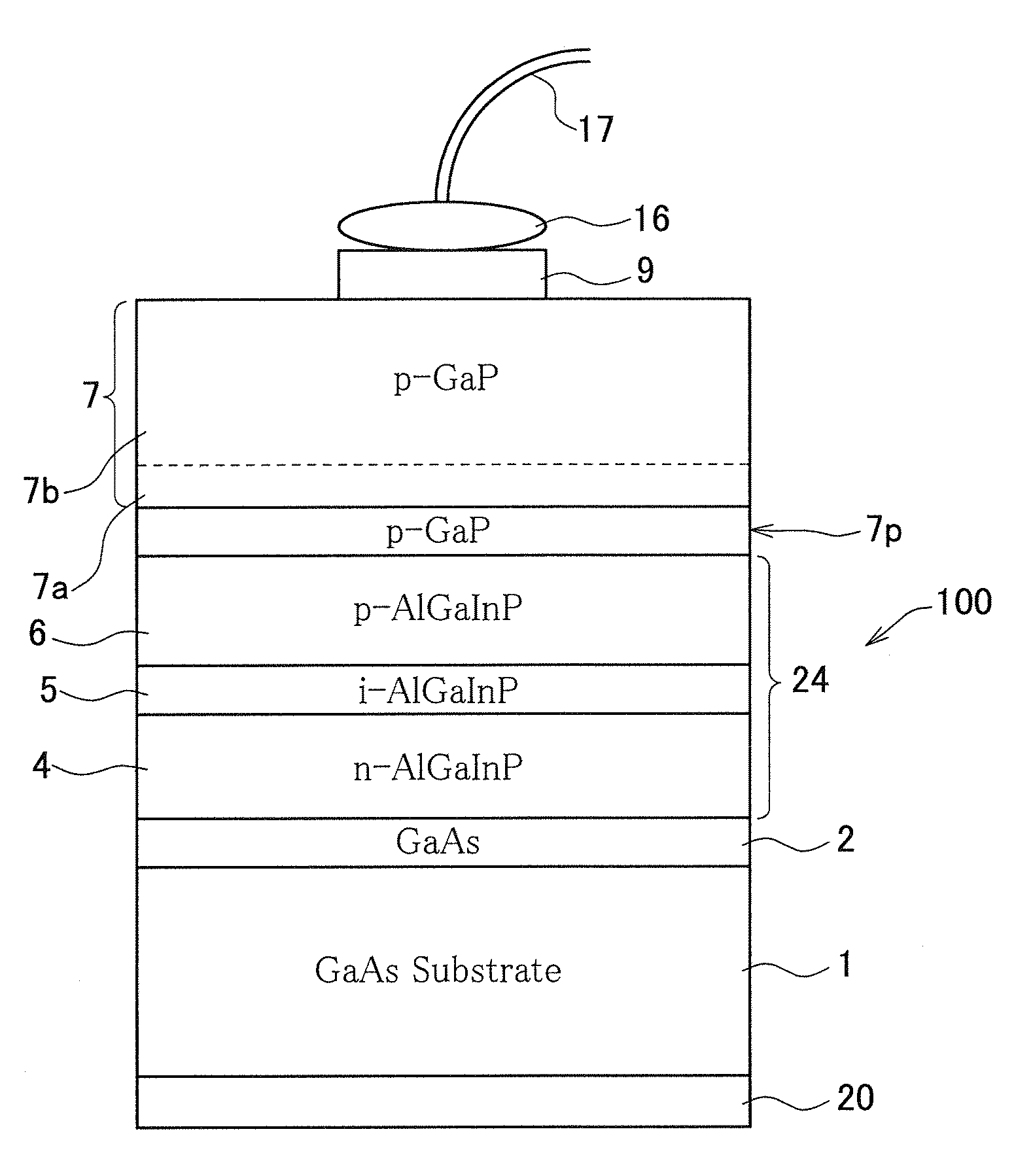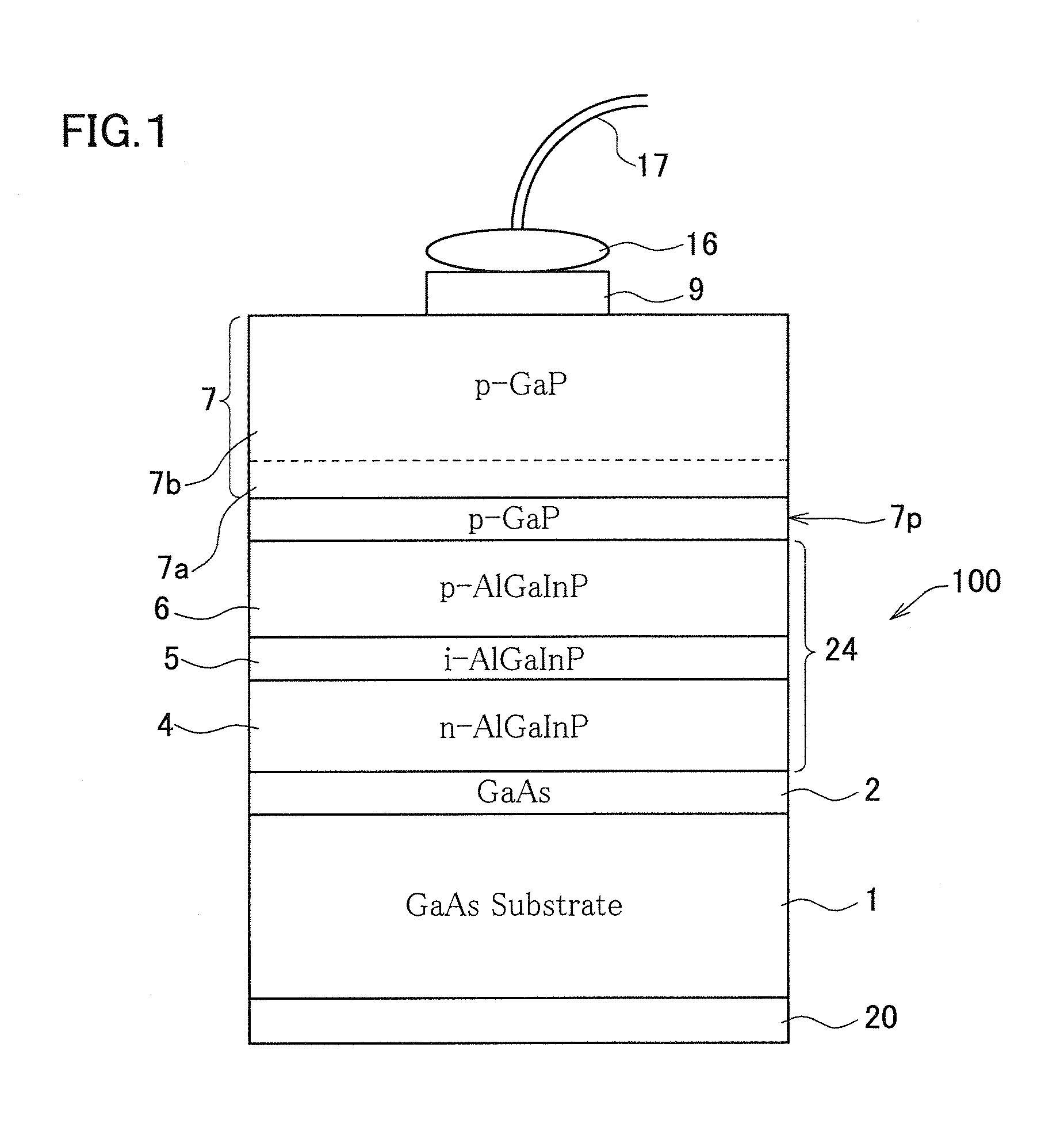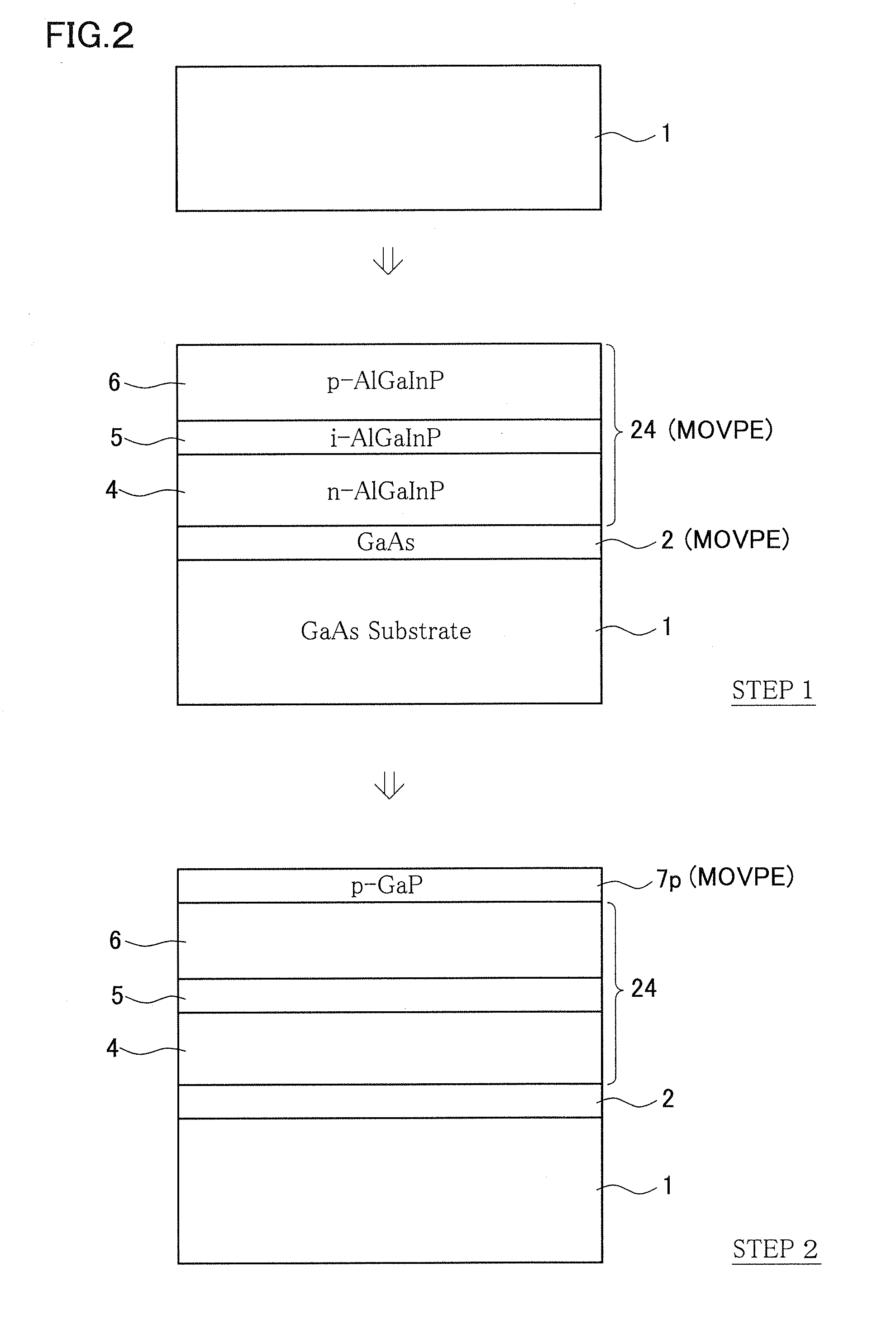Method of Fabricating Light Emitting Device and Compound Semiconductor Wafer and Light Emitting Device
- Summary
- Abstract
- Description
- Claims
- Application Information
AI Technical Summary
Benefits of technology
Problems solved by technology
Method used
Image
Examples
example 1
[0052]The compound semiconductor wafer 200 shown in FIG. 3 is formed so that each layer has thickness, as follows. Also, as a GaAs single crystal substrate, one provided with a principal axis off-angled in a degree of approximately 15°, while having a direction as a basic direction is used. An n-type AlGaInP cladding layer 4, an AlGaInP active layer 5, a p-type AlGaInP cladding layer 6 and a GaP connection layer 7p are formed using a MOVPE equipment (Metal Organic Vapor Phase Epitaxy step), and a GaP low-rate growth layer 7a and a GaP high-rate growth layer 7b are formed in hydrogen atmosphere at approximately 760° C. using a Hydride Vapor Phase Epitaxial Growth equipment (Hydride Vapor Phase Epitaxial Growth step), so as to obtain the compound semiconductor wafer 200. The GaP low-rate growth layer 7a is formed at a growth rate of approximately 6 μm / hour, and the GaP high-rate growth layer 7b is formed at a growth rate of approximately 20 μm / hour. Also, thickness of each layer is, ...
example 2
[0060]Under the same conditions as Example 1 except that the GaP low-rate growth layer 7a is 2 μm, a compound semiconductor wafer was fabricated by conducting the Metal Organic Vapor Phase Epitaxy step and the Hydride Vapor Phase Epitaxial Growth step similarly. When a main surface of the obtained GaP current spreading layer was visually observed under fluorescent light, hillock was not found. Also, forward voltage (Vf) thereof at 20 mA was approximately 1% higher than that of Example 1.
PUM
 Login to View More
Login to View More Abstract
Description
Claims
Application Information
 Login to View More
Login to View More - R&D
- Intellectual Property
- Life Sciences
- Materials
- Tech Scout
- Unparalleled Data Quality
- Higher Quality Content
- 60% Fewer Hallucinations
Browse by: Latest US Patents, China's latest patents, Technical Efficacy Thesaurus, Application Domain, Technology Topic, Popular Technical Reports.
© 2025 PatSnap. All rights reserved.Legal|Privacy policy|Modern Slavery Act Transparency Statement|Sitemap|About US| Contact US: help@patsnap.com



